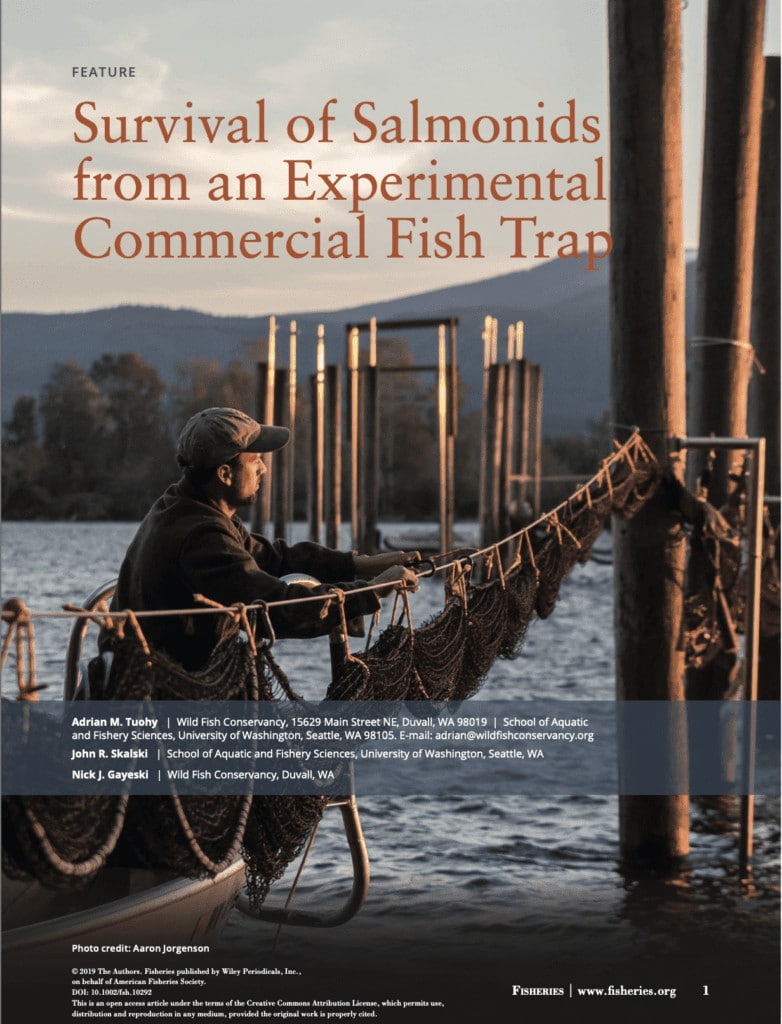
Description |
|---|
A paper authored by Wild Fish Conservancy’s Adrian Tuohy, Nick Gayeski, and John Skalski. Conventional harvest techniques used in mixed-stock commercial salmon fisheries frequently result in bycatch mortality, thereby impeding salmonid recovery and constraining fishing opportunities in the U.S. Pacific Northwest. To address the problem, a postrelease survival study was conducted in the Columbia River to evaluate the potential of an experimental salmon trap for stock-selective commercial harvest. A modified fish trap was constructed and operated in 2017, from August through September, with the goal of minimizing entanglement, air exposure, crowding, and handling of all captured fishes. Postrelease survival from the trap was estimated through a paired release–recapture study. Results demonstrate that the trap effectively targeted commercially viable quantities of hatchery-origin Chinook Salmon Oncorhynchus tshawytscha and Coho Salmon O. kisutch while reducing bycatch mortality rates relative to conventional commercial fishing gears. During the study, 7,129 salmonids were captured. The postrelease survival effect over a 400-km migration ranged from 0.944 (SE=0.046) for steelhead O. mykiss to 0.995 (SE= 0.078) for Chinook Salmon, supporting the potential application of traps for stock-selective commercial harvest. |
File Attachment |
|---|
Download |
Join our mailing list to recieve important updates on our work, the latest wild fish news, & opportunities to take action to support wild fish.
This site is protected by reCAPTCHA and the Google Privacy Policy and Terms of Service apply.
Wild Fish Conservancy is recognized as a 501(c)3 non-profit by the IRS